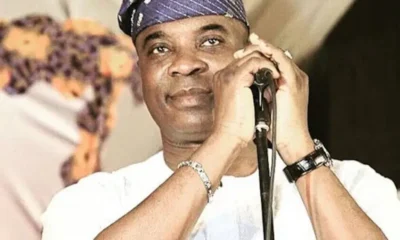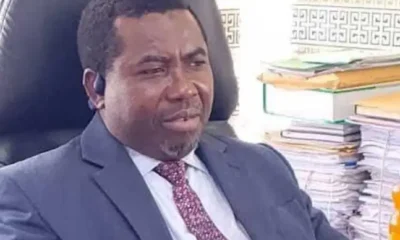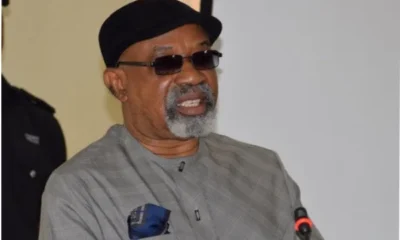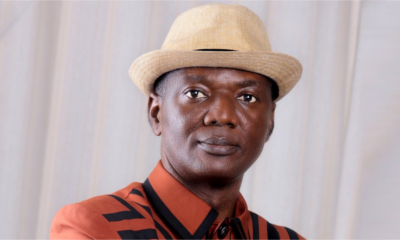Business
Nigeria’s eight-month debt service bill hits $2.86bn – CBN
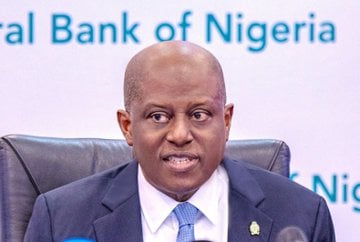
Nigeria spent a total of $2.86bn servicing external debt in the first eight months of 2025, according to the international payment data from the Central Bank of Nigeria on Wednesday. This accounted for 69.1 per cent of the country’s total foreign payments of $4.14bn in the period.
In the same eight-month stretch of 2024, debt service stood at $3.06bn, representing 70.7 per cent of total foreign payments of $4.33bn. The figures show that while the absolute value of debt service fell by $198m between 2024 and 2025, the share of debt in overall foreign payments has remained persistently high, with about seven out of every ten dollars leaving the country used to meet debt obligations.
The monthly breakdown highlights the volatility of Nigeria’s repayment schedule. In January 2025, $540.67m was spent compared with $560.52m in January 2024, a fall of $19.85m or 3.5 per cent. February 2025 recorded $276.73m, slightly below the $283.22m in February 2024, down by $6.49m or 2.3 per cent.
March 2025 surged to $632.36m against $276.17m in March 2024, an increase of $356.19m or 129 per cent. In April 2025, payments reached $557.79m, which was $342.59m or 159 per cent higher than the $215.20m of April 2024.
May 2025 stood at $230.92m, sharply lower than the $854.37m in May 2024, a drop of $623.45m or 73 per cent. June 2025 rose to $143.39m compared with $50.82m in June 2024, a rise of $92.57m or 182 per cent.
July 2025 fell to $179.95m, down by $362.55m or 66.8 per cent from $542.5m in July 2024. By August 2025, debt service climbed to $302.3m, which was $22.35m or 8 per cent higher than the $279.95m of August 2024.
Month-on-month trends in 2025 further underline the erratic nature of the payments. The country began January with $540.67m, which dropped by $263.94m or 48.8 per cent to $276.73m in February.
March then spiked to $632.36m, up by $355.63m or 128.5 per cent. April fell to $557.79m, down by $74.57m or 11.8 per cent from March. May dropped to $230.92m, down by $326.87m or 58.6 per cent. June slipped further to $143.39m, a decline of $87.52m or 37.9 per cent.
July rebounded slightly to $179.95m, an increase of $36.56m or 25.5 per cent, before August rose again to $302.3m, which was $122.35m or 67.9 per cent higher than July.
The dominance of debt service in Nigeria’s foreign obligations is clear. In the eight months of 2025, $2.86bn of the $4.14bn total foreign payments went to debt, giving it a share of 69.1 per cent. A year earlier, $3.06bn of the $4.33bn total foreign payments went to debt, accounting for 70.7 per cent.
These figures show that, despite spending nearly $200 million less on debt this year compared to 2024, debt still accounted for the overwhelming majority of foreign exchange outflows.
This high ratio of debt service to total foreign payments highlights Nigeria’s vulnerability, as nearly three-quarters of its international outflows are being channelled into debt repayment rather than critical imports or investments.
Fitch Ratings recently noted that Nigeria’s external debt service will increase from $4.7bn in 2024 to $5.2bn in 2025. This includes $4.5bn in amortisation payments and a $1.1bn Eurobond repayment due in November. Fitch noted, “Government external debt service is moderate but expected to rise to $5.2bn in 2025 (with $4.5bn of amortisations, including a $1.1bn Eurobond repayment due in November 2025), from $4.7bn in 2024, and fall to $3.5bn in 2026.”
The agency also cited a minor delay in the payment of a Eurobond coupon due on March 28, 2025, as a reflection of persistent challenges in public finance management. Although Nigeria’s external debt service remains within manageable levels, Fitch warned that high-interest costs, weak revenue performance, and limited fiscal space remain significant concerns.
Fitch said general government debt was expected to remain at about 51 per cent of GDP in 2025 and 2026. However, it expressed concern over the government’s revenue position, noting that interest payments will consume a substantial portion of income.
It stated, “We expect general government revenue-to-GDP to rise but to remain structurally low (averaging 13.3 per cent in 2025–2026), largely accounting for a high general government interest/revenue ratio, above 30 per cent, with the Federal Government interest/revenue ratio of nearly 50 per cent.”(Punch)
-

 News20 hours ago
News20 hours agoFusengbuwa Ruling House rejects KWAM 1’s claim to Awujale throne
-

 News20 hours ago
News20 hours agoU.S. seizes Nigerian-owned supertanker over alleged crude theft
-

 News20 hours ago
News20 hours agoRecruitment of 50,000 Police Constables: PSC opens application portal
-

 Politics20 hours ago
Politics20 hours agoVote Buying: Why we’ve not charged those arrested in Anambra to court – INEC
-

 News20 hours ago
News20 hours agoFCCPC seals Ikeja Electric office over prolonged violation of consumer rights
-

 News19 hours ago
News19 hours agoAlleged N2.2bn fraud: EFCC arraigns ex-labour minister Ngige today
-

 News20 hours ago
News20 hours agoAfter refusing to defect to APC, Bayelsa deputy governor slumps, pronounced dead
-

 Business20 hours ago
Business20 hours agoPZ Cussons Drops Plan to Exit Nigeria, Other African Countries, Gives Reason



